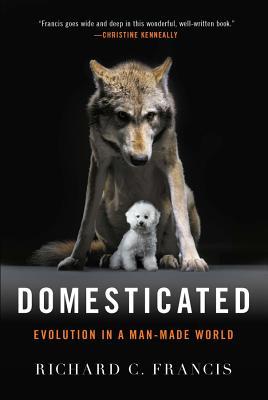Since that fateful day when the first wolf decided to stay close to human hunters, humans and their various animal companions have thrived far beyond nearly all wild species on earth. Tameness is the key trait in the domestication of cats, dogs, horses, cows, and other mammals, from rats to reindeer. Surprisingly, with selection for tameness comes a suite of seemingly unrelated alterations, including floppy ears, skeletal and coloration changes, and sex differences. It's a package deal known as the domestication syndrome, elements of which are also found in humans. Our highly social nature--one of the keys to our evolutionary success--is due to our own tameness. In Domesticated, Richard C. Francis weaves history and anthropology with cutting-edge ideas in genomics and evo devo to tell the story of how we domesticated the world, and ourselves in the process.

Since that fateful day when the first wolf decided to stay close to human hunters, humans and their various animal companions have thrived far beyond nearly all wild species on earth. Tameness is the key trait in the domestication of cats, dogs, horses, cows, and other mammals, from rats to reindeer. Surprisingly, with selection for tameness comes a suite of seemingly unrelated alterations, including floppy ears, skeletal and coloration changes, and sex differences. It's a package deal known as the domestication syndrome, elements of which are also found in humans. Our highly social nature--one of the keys to our evolutionary success--is due to our own tameness. In Domesticated, Richard C. Francis weaves history and anthropology with cutting-edge ideas in genomics and evo devo to tell the story of how we domesticated the world, and ourselves in the process.